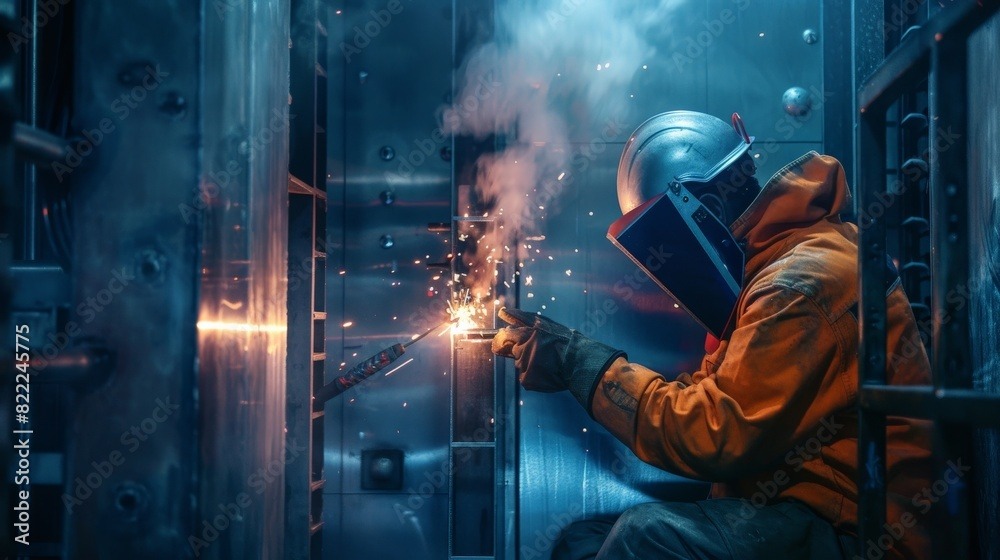Select Appropriate PPE Clothing

To properly protect workers, it is critical that those responsible understand the differences between flame- and arc-resistant clothing.
Working in industrial environments means workers will be exposed to high heat, electricity, and other flammable hazards. Providing them with appropriate clothing reduces personal risk and ensures workplace safety. Furthermore, OSHA has issued specific requirements for flame-resistant PPE. If workers encounter fire hazards during daily operations, they must be given appropriate clothing.
Yet, flame resistance is far from an exercise in style, and its primary concern is safety. Also, flame-resistance criteria differ depending on the heat’s source. Consequently, electric utility workers will need different clothes than an oil rigger. In addition, arc welders need specific arc-resistant clothing for their line of work. Occasionally, PPE regulations can appear confusing, although they are simple to understand. To begin, it’s important to delineate between FR (flame-resistant) and AR (arc-resistant) clothing options.
Flame-resistant clothing
FR clothing resists ignition when exposed to flames, regardless of the source. For example, a welder could expose themselves to an arc flash, molten lead, or a furnace while wearing FR clothing and the garments would resist catching fire, protecting them from hazardous effects.
Typically, FR clothes are tested using the ASTM D-6413 standard. Otherwise known as the vertical flame test, this method measures vertical flame resistance in textiles. A textile’s flame resistance, after-flame, and afterglow characteristics are evaluated during testing. Therefore, this standard assesses and describes material response under laboratory conditions. Flame exposure must last for 12 sec. during the testing procedures.
Each layer of the fabric must run through the test separately. Materials may not drip or melt while exposed to the flames, preventing skin burns and lesions. Overall, these tests determine how protective will clothing in a hazardous situation. Thus, an essential measurement of its efficacy is if it reduces total body surface-area burns.
Arc-rated clothing
As an employer, you might have heard about arc ratings and how they differ from flame resistance. These differences entail changes that enhance protection from second- and third-degree burns. As a consequence, arc-rated clothing is an extension of FR standards.
The National Fire Protection Association has developed additional requirements, including NFPA Standards 70E, 2112, 2113, 45, and 652. First, clothing must pass FR standards, and then it may undergo arc testing. The clothing’s arc rating measures how much energy it can absorb before penetration. In particular, it describes how much energy it takes to cause a 50% probability of second- or third-degree burns.
Secondly, these tests check the clothing’s energy break-open threshold. This is a measurement describing how much energy is required to penetrate the fabric. Usually, the material can only withstand a limited amount of electricity before rupturing. As such, this rating measures how much energy it takes to create a 50% rupture probability.
The NFPA’s requirements define when FR-rated clothing should be worn. Standard 70E says employees must wear PPE when arc flash exposure exceeds the threshold incident-energy level for a second-degree burn. In other words, if a worker risks second-degree burns, arc-rated clothes are recommended.
In 2014, NFPA Standard 70E was given legal weight following an OSHA Final Rule. Today, using arc-rated clothing is mandatory anywhere with arc flash hazards. As such, you must provide it to comply with OSHA regulations 29 CFR 1910 and 29 CFR 1926.
NFPA PPE categories
AR clothing falls into four possible categories, describing their total protection. These are defined using the clothing’s Arc Thermal Performance Value. Generally, clothes rank from category one to four, with a larger number signifying better protection. Category one items may include single-layer arc shirts, pants, and coveralls. However, a category four item would be a full-body arc flash suit.
Ultimately, these regulatory standards were developed as a way to enhance workplace safety. Still, the difference between flame resistance and arc resistance is straightforward. In short, anything that is arc-rated will also be flame-rated. But flame-rated items are not necessarily arc-rated. Thus, assessing your particular workplace is crucial in determining which type is most suitable. If you want to learn more about these ratings, the National Fire Protection Agency hosts resources.
Supplying workers with flame-rated and arc-rated PPE is more than a requirement. It is the right thing to do. Otherwise, their work could put them in harm’s way and they could be injured on the job. By stocking adequate PPE materials, welders, engineers, and plant managers can work without exposing themselves to excessive risk.
EP Editorial Staff | October 7, 2024
Information for this article was provided by the experts at All Seasons Uniforms, Woodstock, IL. Learn more about PPE clothing and equipment at allseasonsuniforms.com.
The post "Select Appropriate PPE Clothing" appeared first on Efficient Plant

